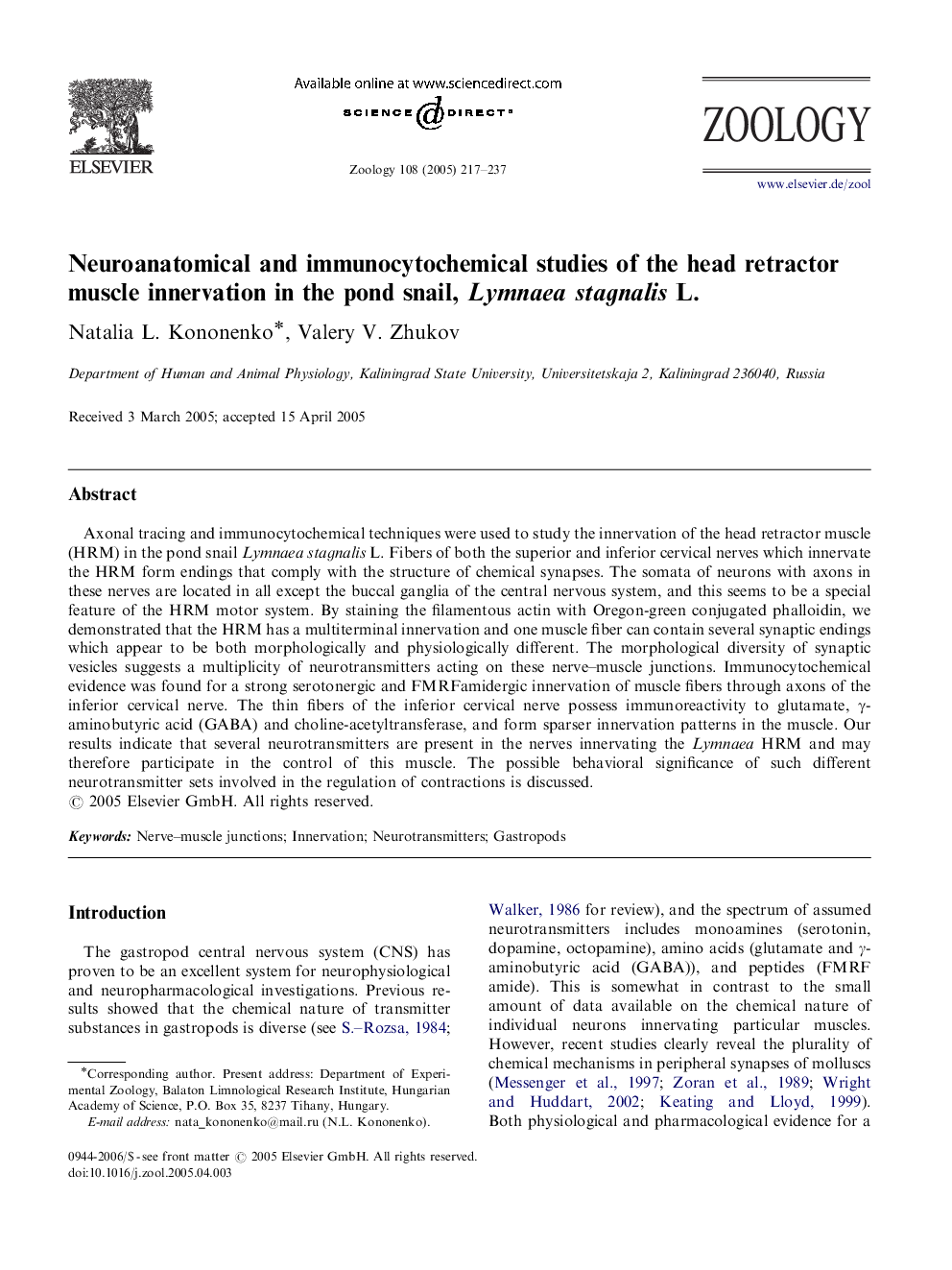| Article ID | Journal | Published Year | Pages | File Type |
|---|---|---|---|---|
| 9110034 | Zoology | 2005 | 21 Pages |
Abstract
Axonal tracing and immunocytochemical techniques were used to study the innervation of the head retractor muscle (HRM) in the pond snail Lymnaea stagnalis L. Fibers of both the superior and inferior cervical nerves which innervate the HRM form endings that comply with the structure of chemical synapses. The somata of neurons with axons in these nerves are located in all except the buccal ganglia of the central nervous system, and this seems to be a special feature of the HRM motor system. By staining the filamentous actin with Oregon-green conjugated phalloidin, we demonstrated that the HRM has a multiterminal innervation and one muscle fiber can contain several synaptic endings which appear to be both morphologically and physiologically different. The morphological diversity of synaptic vesicles suggests a multiplicity of neurotransmitters acting on these nerve-muscle junctions. Immunocytochemical evidence was found for a strong serotonergic and FMRFamidergic innervation of muscle fibers through axons of the inferior cervical nerve. The thin fibers of the inferior cervical nerve possess immunoreactivity to glutamate, γ-aminobutyric acid (GABA) and choline-acetyltransferase, and form sparser innervation patterns in the muscle. Our results indicate that several neurotransmitters are present in the nerves innervating the Lymnaea HRM and may therefore participate in the control of this muscle. The possible behavioral significance of such different neurotransmitter sets involved in the regulation of contractions is discussed.
Related Topics
Life Sciences
Agricultural and Biological Sciences
Animal Science and Zoology
Authors
Natalia L. Kononenko, Valery V. Zhukov,
